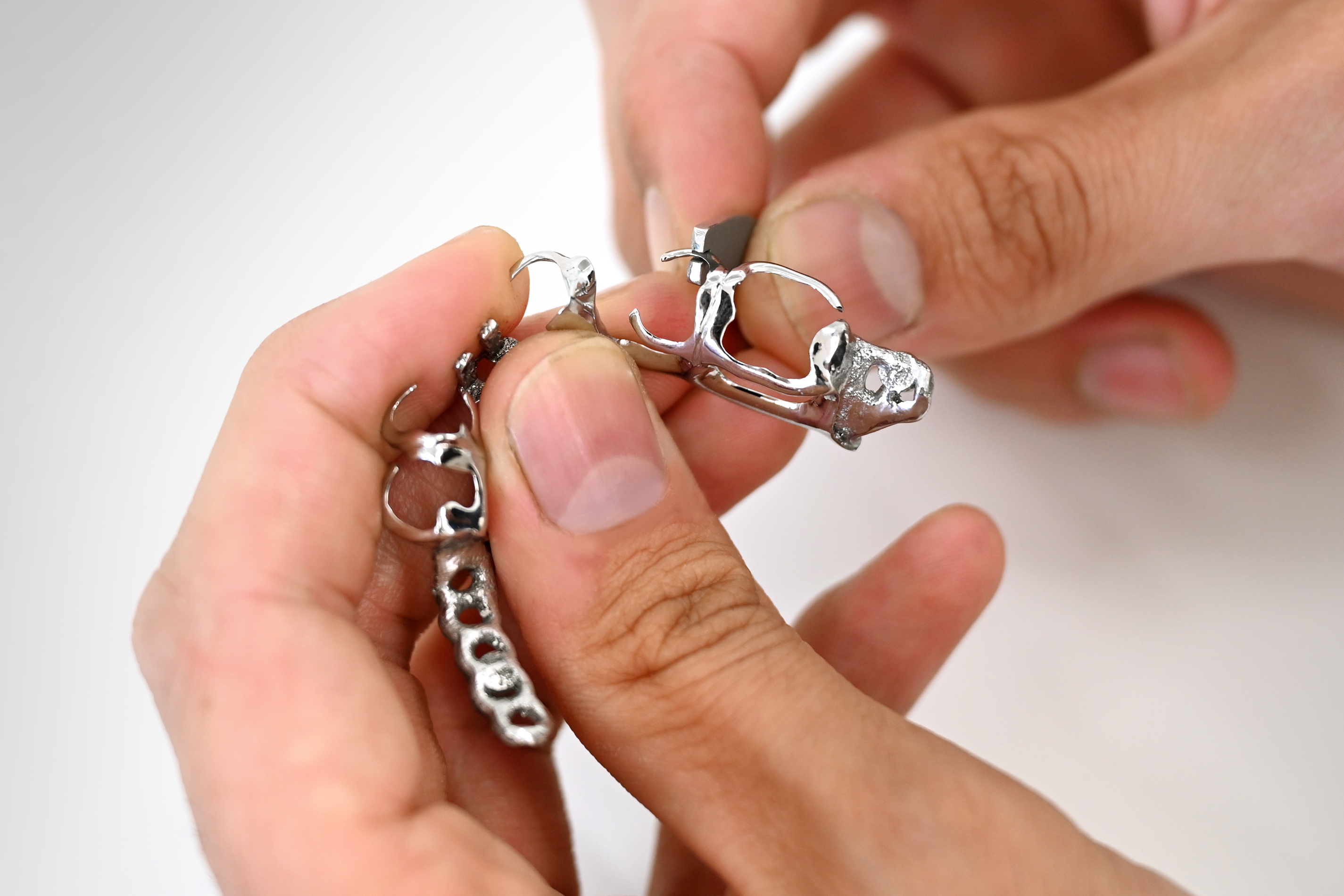Activate partial denture clasps – analogue or digital, with CoCr, titanium and PEEK
Partial denture prostheses (RPDs), also known as partial frameworks, are removable and are used to fill gaps caused by missing teeth. The most important part of the prosthesis are its clasps, which securely anchor the later dentures to the existing teeth. The denture saddles including the artificial teeth are then attached to the stable framework. Partial frameworks (RPS) are the means of choice for cost-effective replacement of several missing teeth. The prostheses are usually made of a cobalt-chrome alloy, more rarely of titanium (in the case of allergies). The metal-free use of resins made from polyetheretherketones (PEEK) is relatively new. In this article you will learn how the activation of the clasps works with the different manufacturing processes and materials - also how it behaves with the activation of PEEK.
Partial framework (RPD) – analogue or digital
Whether analog or digital, the usual basis for the partial framework (RPD) is the master model, which is preceded by the impression of the patient's dentition, then the production of the opposing bite follows in the articulator to simulate the movements of the jaw joint. Analogously, all further work steps are carried out manually on the master model, while a software guides you through the design process digitally. Once this is complete, the subsequent manual activation of the clasps is essential in both variants for the perfect hold of the partial framework (RPD) when speaking and chewing.
The art of clasp activation
Under no circumstances should three-jaw pliers be used for clasp activation. This is because you ma easily occur in deformations. Better suited for this sensitive mechanical process is the use of the “tap wrench” bending tool specially developed by CADdent in order to be able to bend the clasps exactly. Clasp activation is a master craftsman's art, but it has to be suitable for the production of the prosthesis using the casting process or selective LaserMelting. Because the metal used reacts differently to further processing.
Activating the clasps in the casting process is identical to LaserMelting (LM). However, the different material structures must be taken into account: LaserMelting has a more homogeneous lattice structure than cast iron. This is because during casting carbon is absorbed, which makes the material brittle. In addition, cavities can occur - these are resulting from the solidification of cast metal parts and the shrinkage of the material volume due to cooling. The criteria of carbon absorption and cavities do not apply to LaserMelting. LaserMelting clasps are more elastic than cast clasps, which are more rigid and brittle. A careful and slow activation of the clasp, i.e. deformation with a lot of sensitivity, is very common for both variants, otherwise there is a risk of the clasp breaking.
PEEK, a young metal-free material
Alternatively and tested in practice, the partial denture made of PEEK is a material of choice, especially for patients with metal allergies. The metal-free clasp prosthesis, which is very light in terms of weight, is designed digitally and milled from the PEEK disc from a single piece – framework, clasps as a unit.
-
This biocompatible high-performance resin is particularly resilient, unbreakable, insensitive to almost all organic and inorganic chemicals and has a high level of X-ray transparency.
-
As a thermoplastic material, PEEK can be easily deformed with a melting temperature of 335 °C, its elasticity is very high, similar to that of bone, and the material is insensitive to abrasion.
-
Due to the polished, very smooth surface, this resin is resistant to discoloration and plaque deposits.
-
The fit of the milled PEEK partial denture is excellent, regardless of the number of clasps.
-
The modulus of elasticity of the delicate PEEK clasps is very high, due to the high spring force they do not damage the remaining teeth in any way. The PEEK clasps themselves cannot be bent, the finer they are, the higher the risk of breaking off. In this case, the entire bracket must be milled again and polymerized into the existing prosthesis.
CONCLUSION
The activation of clasps, whether digital or analog metal-based partial framework (RPD), is a high level of craftsmanship of experts. A real alternative to the metal variant is a digital RPD prosthesis made from the biocompatible high-performance dental resin PEEK. The PEEK functionality is high, the mouthfeel and wearing comfort are excellent. Manual activation of the clasps with PEEK is neither necessary nor possible due to the high material elasticity.
